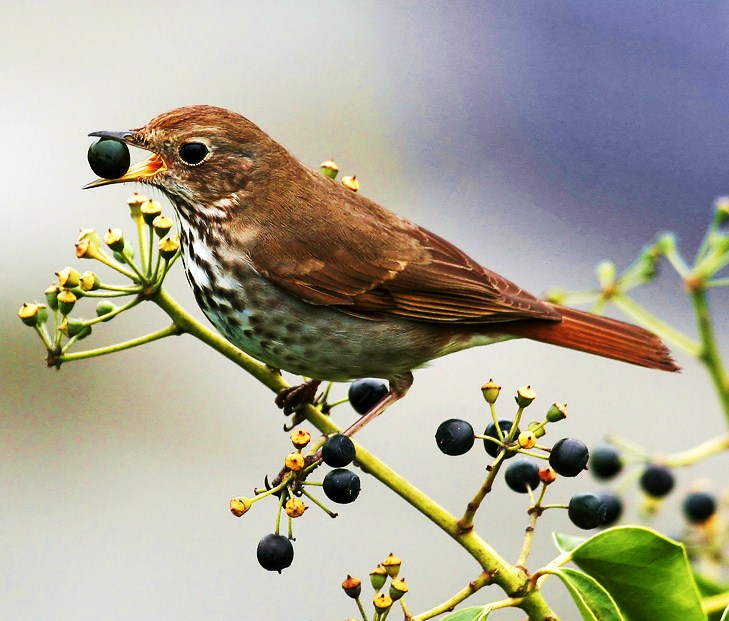Catharus guttatus
Common name:
hermit thrush (en); sabia-eremita (pt); grive solitaire (fr); zorzal ermitaño (es); einsiedlerdrossel (de)
Taxonomy:
Order Passeriformes
Family Turdidae
Range:
This North American species breeds in the western and northeastern United States into Alaska and in much of the southern half of Canada. They winter further south, along the western coast of the United States, in the south-eastern and southern United States and into Mexico.
Size:
Hermit thrushes are 14-18 cm long and have a wingspan of 25-29 cm. They weigh 23-37 g.
Habitat:
These birds breeds in the interior of dense deciduous, mixed, and coniferous forest, favoring internal forest edges like ponds, logging roads, and utility cuts. They winter in moist and dense cover of woody growth, forests, open woodlands, and in the northern part of range especially in ravines and sheltered sites.
Diet:
During the breeding season hermit thrushes eat insects and their larvae, spiders, earthworms, snails and small salamanders. In autumn and winter they mostly eat fruits and berries.
Breeding:
These birds breed in April-August. Males establish and defend breeding territories and once a female is accepted into the territory, she begins building the nest. The nest is an open cup built with a variety of vegetable material including grass, leaves, mosses, and lichens. The nest is usually placed on the ground beneath live woody and non-woody plants or in open areas. There the female lays 3-6 pale blue to blue-green eggs with a few brown flecks. The female incubates the eggs alone for 12 days and during this period she is fed by the male. The female feeds the nestlings with food brought to the nest by the male until fledging, which takes place 10-15 days after hatching. Each pair may lay up to 3 broods per season.
Conservation:
IUCN status – LC (Least concern)
Hermit thrushes have an extremely large breeding range and a global population of 60 million individuals. This species had undergone a large increase of roughly 15% per decade over the last 40 years, so it it not threatened at present.








